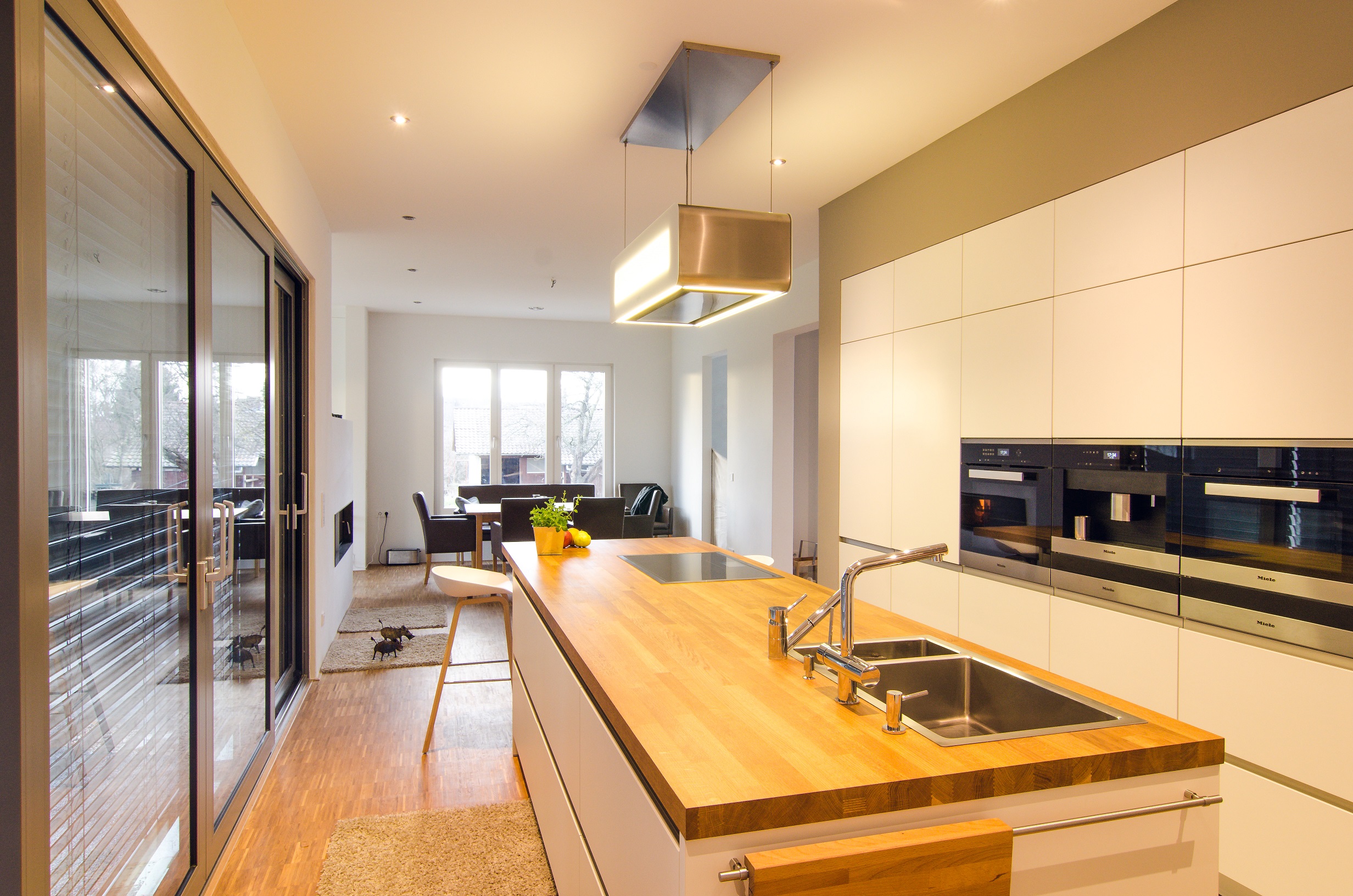
Most new-builds feature open-space layouts nowadays, in which the kitchen is connected to the living area. This seamless architecture turns the kitchen into a communication hub, but it also gives rise to certain challenges: working noise of kitchen appliances and tools can no longer be shut out. Demand for low-noise appliances is on the rise, as bothersome noise is also a stress factor that can have an impact on human health. Decibel values stated for electric devices are helpful to a limited extent only, as these numbers must be considered in relation to other aspects such as performance and efficiency.
Acoustic comfort and efficiency
Acoustics and noise levels are taken into account increasingly, across various areas of everyday life. Sound design for door noise is nothing new in the automotive industry, and this issue is now gaining relevance in other fields, too. Good products are no longer just a part of an interior design concept, but any function-related side effects should ideally be ruled out as well.
Especially in the kitchen, where more and more technical devices are used, it is important that users are not disturbed by background noise, when they would like to have a conversation or focus on food preparation. The extraction specialists from Rheine consider acoustic comfort an integral part of product design for their extraction systems. The company is well-known for its appliances that reliably remove cooking odours and vapours from the room air, and that are popular statement pieces for any kitchen.
The potential noise sources
of extraction systems are determined by acoustic parameters: structure-borne and airborne sound. Structure-borne sound is the result of moving or vibrating components coming into contact with fixtures and thus knocking against these, albeit on a very small scale. This is why berbel uses vibration-reducing materials to separate the fan and motors from the rest of the hood, to minimise this source of noise as effectively as possible.
Circulation noises account for the far greater and more distinct share of noise. These are the result of air currents being forced through obstacles. Extraction systems by berbel can impress with two advantages here. No forced flow panel filters are used, thanks to the patented berbel principle that is based on centrifugal separation and reduces resistance within the system. Strain on the fan as the key source of airborne noise in the appliance is therefore decreased.
Another decisive aspect are berbel’s odour-binding active carbon units. Their dimensions alone make them a perfect sound absorber on the outlet side. However, it is generally the case that a source of noise will emerge in any place where air cannot flow straight ahead but is redirected, compressed or obstructed. Skilful engineering based on deliberate interference and a geometric design of the flow channels inside extraction systems by berbel, allows for flow sounds to be controlled.
Perception of noise varies
However, noise is not a fixed value. We differentiate between physical parameters such as the acoustic power level based on frequency and human beings as a variable. The intensity with which different sounds are perceived varies, depending on an individual’s hearing spectrum. This is why we need to distinguish between physical intensity (measured in “dB (A)”) and perceived loudness (measured in “phon” or “sone”). If 65 dB (A) is stated on the energy label, this merely indicates the average value, and not whether the pitch of the main sound is high or low. The human ear is particularly sensitive to sounds ranging between 1,000 Hz and 4,000 Hz, which is the frequency range of speech.
When developing berbel products, special care is taken to ensure that the most intense noises are below this range, as low frequencies are usually perceived as much more gentle and pleasant. Whisper-quiet means that sophisticated engineering and top-quality materials were used down to the finest detail.